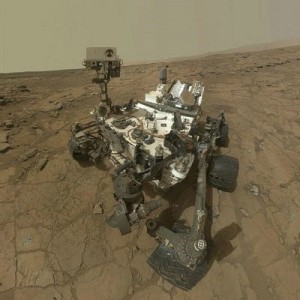NASA’s communication with Mars rovers to be paused
 WASHINGTON: NASA is set to temporarily break contact with its Mars rovers – Opportunity and Curiosity – as the red planet hides almost directly behind the Sun from Earth’s perspective. The arrangement of the Sun between Earth and Mars is called Mars solar conjunction.
WASHINGTON: NASA is set to temporarily break contact with its Mars rovers – Opportunity and Curiosity – as the red planet hides almost directly behind the Sun from Earth’s perspective. The arrangement of the Sun between Earth and Mars is called Mars solar conjunction.
It occurs about every 26 months as the two planets travel in their sun-centered orbits. The sun disrupts radio communications between the planets during the conjunction period. To prevent spacecraft on Mars from receiving garbled commands that could be misinterpreted, the operators of Mars orbiters and rovers temporarily stop sending any commands.
“The teams running NASA’s three active Mars orbiters and two Mars rovers will refrain from sending commands to their spacecraft from about June 7 to June 21,” researchers said. During that period, the Sun will be within two degrees of Mars in Earth’s sky. Spacecraft will continue making observations during the conjunction period, though rovers will not do any driving or arm movements. “Our overall approach is based on what we did for the solar conjunction two years ago, which worked well,” said Nagin Cox, a systems engineer at NASA’s Jet Propulsion Laboratory, Pasadena, California, who is leading conjunction planning for NASA’s Curiosity Mars rover.
NASA’s MAVEN spacecraft, which arrived in Mars orbit last September, will be experiencing its first solar conjunction. MAVEN – short for Mars Atmosphere and Volatile Evolution – will continue monitoring the solar wind reaching Mars and making other measurements. “The data will be stored and transmitted back to us after communications are reestablished at the end of the solar conjunction period,” said James Morrissey, MAVEN deputy project manager at NASA’s Goddard Space Flight Center, Greenbelt, Maryland.
Transmissions from NASA’s two other Mars orbiters – Mars Odyssey and Mars Reconnaissance Orbiter – will continue through the conjunction period, but some of those transmissions are not expected to reach Earth.
Science data transmitted during conjunction will also remain stored aboard the orbiters, for reliable retransmission in late June.

